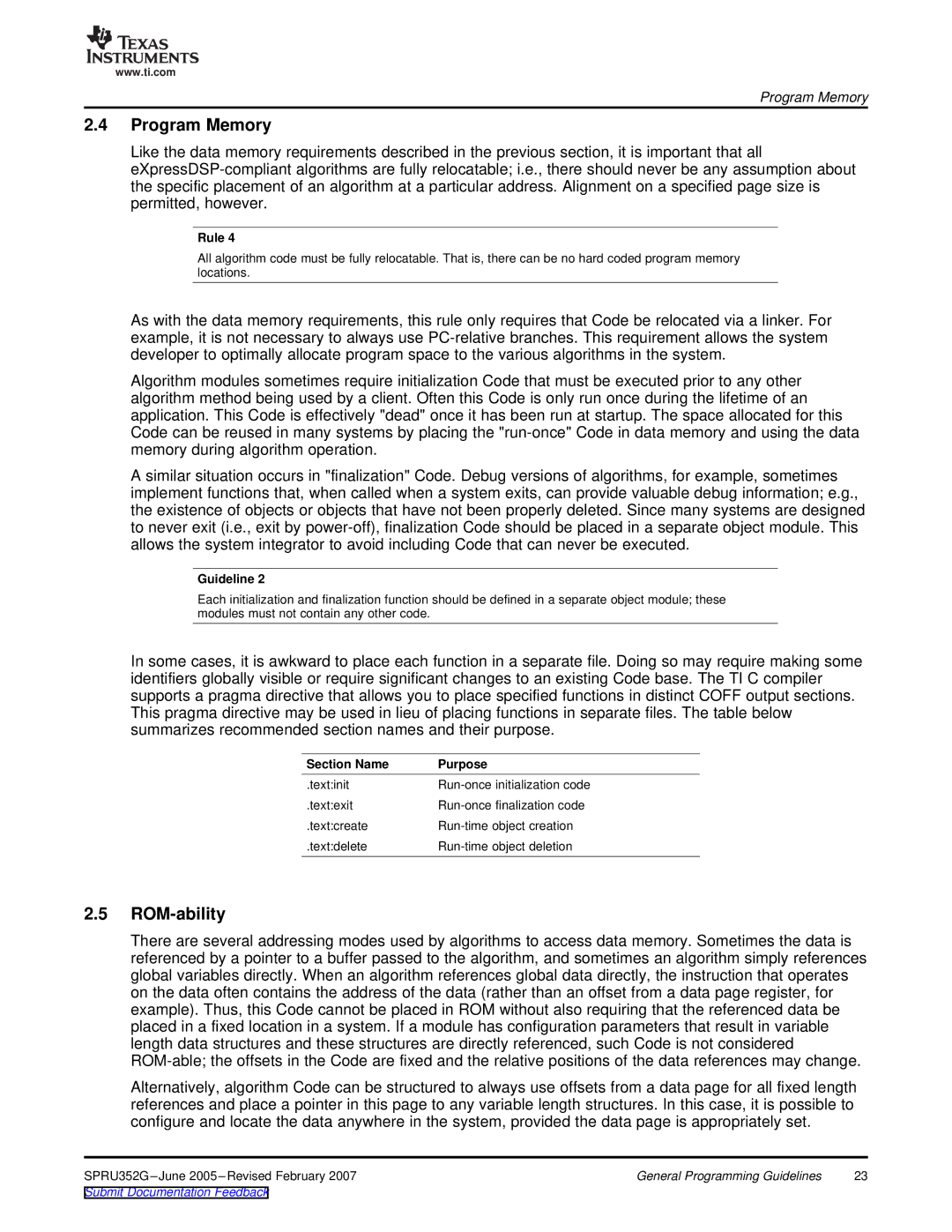
www.ti.com
Program Memory
2.4Program Memory
Like the data memory requirements described in the previous section, it is important that all
Rule 4
All algorithm code must be fully relocatable. That is, there can be no hard coded program memory locations.
As with the data memory requirements, this rule only requires that Code be relocated via a linker. For example, it is not necessary to always use
Algorithm modules sometimes require initialization Code that must be executed prior to any other algorithm method being used by a client. Often this Code is only run once during the lifetime of an application. This Code is effectively "dead" once it has been run at startup. The space allocated for this Code can be reused in many systems by placing the
A similar situation occurs in "finalization" Code. Debug versions of algorithms, for example, sometimes implement functions that, when called when a system exits, can provide valuable debug information; e.g., the existence of objects or objects that have not been properly deleted. Since many systems are designed to never exit (i.e., exit by
Guideline 2
Each initialization and finalization function should be defined in a separate object module; these modules must not contain any other code.
In some cases, it is awkward to place each function in a separate file. Doing so may require making some identifiers globally visible or require significant changes to an existing Code base. The TI C compiler supports a pragma directive that allows you to place specified functions in distinct COFF output sections. This pragma directive may be used in lieu of placing functions in separate files. The table below summarizes recommended section names and their purpose.
Section Name | Purpose |
.text:init | |
.text:exit | |
.text:create | |
.text:delete |
2.5ROM-ability
There are several addressing modes used by algorithms to access data memory. Sometimes the data is referenced by a pointer to a buffer passed to the algorithm, and sometimes an algorithm simply references global variables directly. When an algorithm references global data directly, the instruction that operates on the data often contains the address of the data (rather than an offset from a data page register, for example). Thus, this Code cannot be placed in ROM without also requiring that the referenced data be placed in a fixed location in a system. If a module has configuration parameters that result in variable length data structures and these structures are directly referenced, such Code is not considered
Alternatively, algorithm Code can be structured to always use offsets from a data page for all fixed length references and place a pointer in this page to any variable length structures. In this case, it is possible to configure and locate the data anywhere in the system, provided the data page is appropriately set.
SPRU352G | General Programming Guidelines | 23 |
